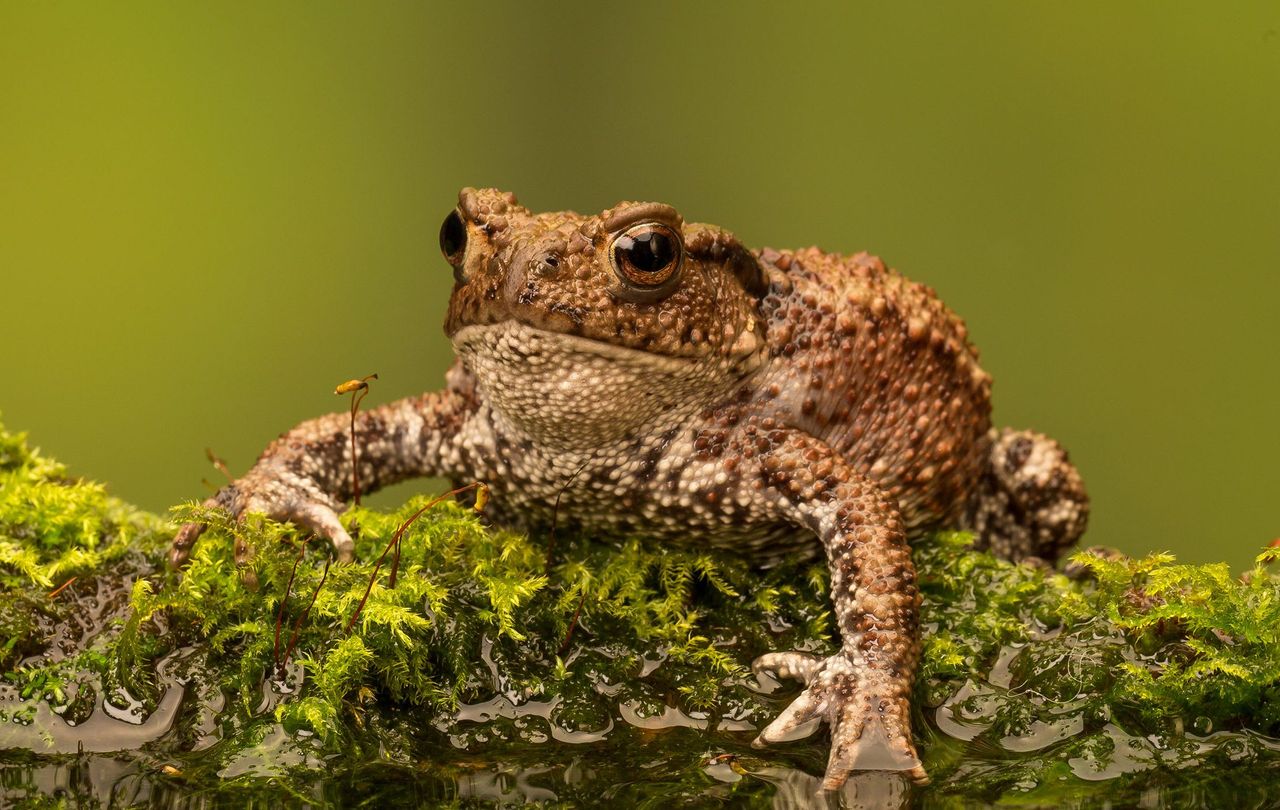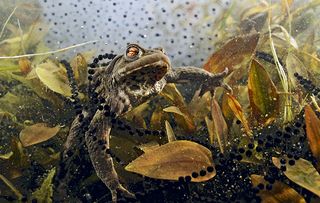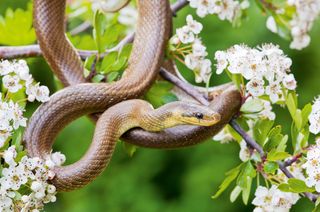The English toads making their homes in the treetops — and baffling researchers at Cambridge
South America is famous for its tree frogs — but it turns out that Britain ought to be just as well known for its tree toads. Annunciata Elwes reports.


The People’s Trust for Endangered Species (PTES) has carried out some new and unusual research — on toads that choose to live in trees. It all started when volunteers looking for bats and hazel dormice — part of the National Dormouse Monitoring Programme (NDMP) and the Bat Tree Habitat Key project (BTHK) — discovered common toads in nest boxes and tree cavities. ‘We couldn’t believe what we found,’ explains Nida Al-Fulaij of the PTES. ‘We’re used to discovering woodland birds and other small mammals… but we hadn’t considered finding amphibians.’
Researchers from the University of Cambridge and Froglife, supported by PTES, realising no one had ever bothered to study the tree-living nature of Bufo bufo, usually found on land and in water, decided do to it themselves. The results are extraordinary, with more than 50 records of common toads found in surveys of hazel dormice nest boxes (5ft above ground) and tree cavities usually used by bats. The highest toad was found nearly 10ft up (the surveys didn’t look higher than that).
"Researchers remain puzzled as to how difficult it is for toads to climb trees, and why they do it"
Although 50 may not seem like a large number, it is comparable to, say, blue tits, meaning common toads could be found in up to one in every 100 trees in the UK, particularly near lakes and ponds — one might even term them ‘arboreal’.
The most popular tree appears to be the goat willow, notes the report’s first author Silviu Petrovan, but this is most likely because the species is found in wet woodland. As many of the tree cavities are small or invisible from the ground, researchers remain puzzled as to how toads find them and there is no knowledge on how difficult it is for them to climb and why they do it, although their motives could include searching for food or fleeing predators or parasites such as the toad fly, grass snakes, otters and polecats. Common toads have declined by 68% over the past 30 years across the UK, which makes the protection of natural woodland habitats ever more vital.
‘We know common toads favour woodlands as foraging and wintering habitat, but it appears their association with trees is much more complex that we thought,’ muses Dr Petrovan. ‘It also highlights the importance of collaborations and sharing data between conservation groups. Targeted research will enable scientists to better understand this behaviour and consider the impact on woodland management.’
If you see a toad up a tree, Froglife would like to hear about it — sightings can be recorded via the Dragon Finder app.
The secret life of toads, from frenzied procreation to hunting snakes in the night
Despite their semi-webbed feet, warty skin and bulging eyes, toads are more endearing than Shakespeare’s witches would have us believe,
Sign up for the Country Life Newsletter
Exquisite houses, the beauty of Nature, and how to get the most from your life, straight to your inbox.

The tale of Mr Toad: From medieval instrument of torture to The Wind in the Willows
Toads might have been feared and reviled for 1,000 years, but the past century has seen us warm to these

The slithering truth about the snakes of Britain, from grass snakes to the 6ft beasts that roam central London (yes, really)
Forever associated with sin, these elongated reptiles are much misunderstood contributors to our ecosystem, believes Annemarie Munro.

Credit: Alamy
The true meaning of Dumbledore, Chiggypig, Hornywink and Lang lugs, and the other old English animal names all but lost to us
The colourful and beautiful archaic names given to the animals and birds of Britain are in danger of being lost
Annunciata grew up in the wilds of Lancashire and now lives in Hampshire with a husband, two daughters and an awful pug called Parsley. She’s been floating round the Country Life office for more than a decade, her work winning the Property Magazine of the Year Award in 2022 (Property Press Awards). Before that, she had a two-year stint writing ‘all kinds of fiction’ for The Sunday Times Travel Magazine, worked in internal comms for Country Life’s publisher (which has had many names in recent years but was then called IPC Media), and spent another year researching for a historical biographer, whose then primary focus was Graham Greene and John Henry Newman and whose filing system was a collection of wardrobes and chests of drawers filled with torn scraps of paper. During this time, she regularly gave tours of 17th-century Milton Manor, Oxfordshire, which may or may not have been designed by Inigo Jones, and co-founded a literary, art and music festival, at which Johnny Flynn headlined. When not writing and editing for Country Life, Annunciata is also a director of TIN MAN ART, a contemporary art gallery founded in 2021 by her husband, James Elwes.
-
 From California to Cornwall: How surfing became a cornerstone of Cornish culture
From California to Cornwall: How surfing became a cornerstone of Cornish cultureA new exhibition at Cornwall's National Maritime Museum celebrates a century of surf culture and reveals how the country became a global leader in surf innovation and conservation.
By Emma Lavelle Published
-
 18 magnificent homes for sale from £550k to £20 million, as seen in Country Life
18 magnificent homes for sale from £550k to £20 million, as seen in Country LifeFrom a charming thatched cottage to a 300-acre estate with its own vineyard, here's our pick of places to come to the market via Country Life of late.
By Toby Keel Published
